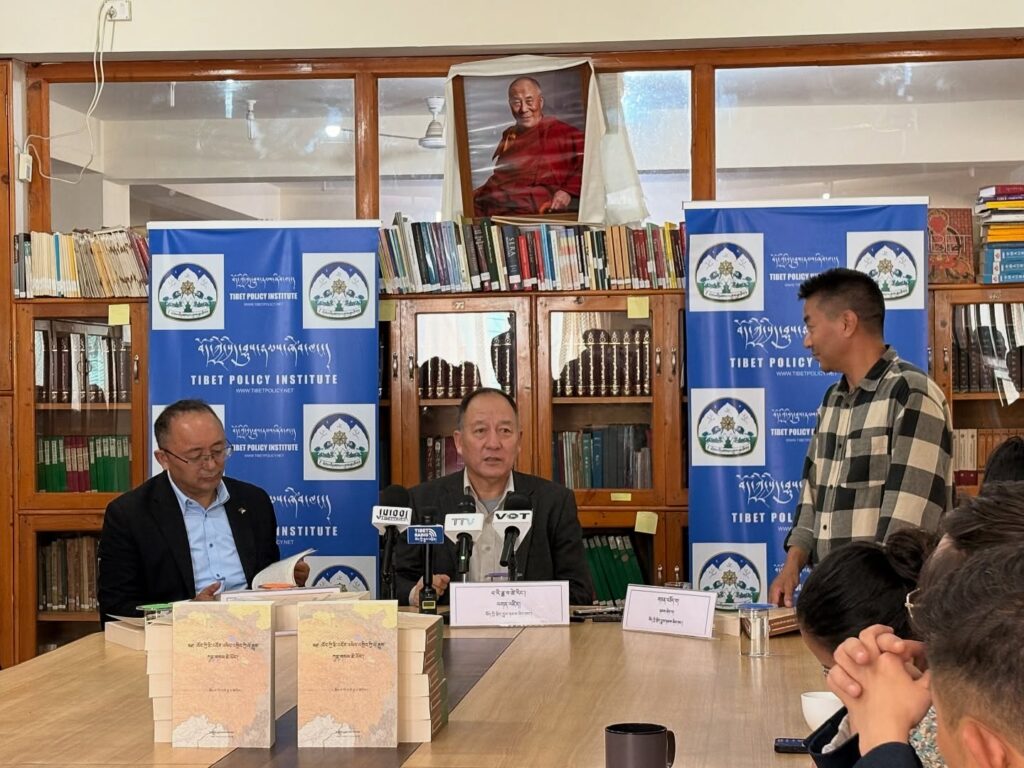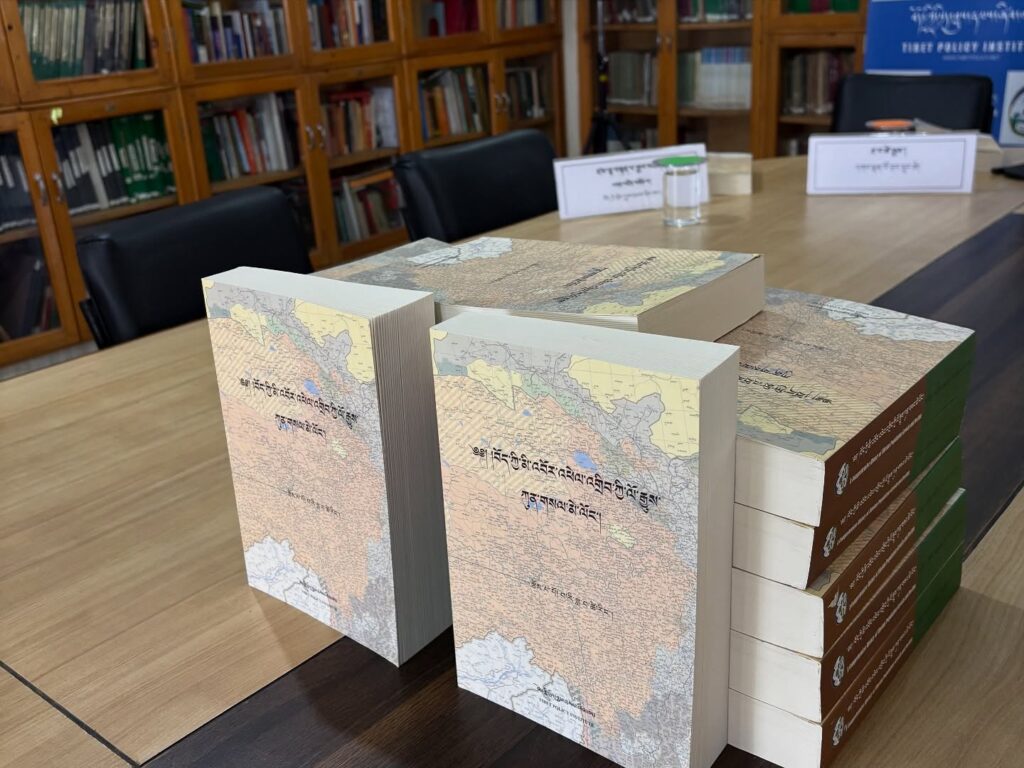Retiring TPI Director Releases Comprehensive Study of Tibetan Population History
By Tenzin Chokyi

DHARAMSALA, 18 Sept: The Tibet Policy Institute (TPI), the research wing of the Central Tibetan Administration (CTA), today launched a Tibetan version of a book titled “A Comprehensive History of Tibetan Population Growth and Decline” authored by its retiring Director, Bari Dawa Tsering, a work that represents the most detailed and comprehensive study of Tibet’s population to date.
The book examines Tibetan population trends from Tibet’s earliest recorded history, through the Tibetan empire, to the present under the Chinese Communist Party rule. It offers a detailed analysis of demographics in occupied Tibet based on Chinese official documents since 1983, when the Communist Party of China conducted its third national census — a dataset the author identifies as key to understanding both historical and contemporary population dynamics in Tibet.
Speaking at the launch, Bari Dawa Tsering said his objective was to present the historical reality of Tibet’s population against the entrenched narrative promoted by Chinese propaganda, which claims Tibet has always been sparsely populated. He argued that this narrative was crafted to obscure the massacres and mass deaths suffered by Tibetans under Chinese occupation.
He noted that after the establishment of the 17-point agreement by China in Tibet in 1951, many legitimate Tibetan taxation records disappeared, and Tibetans were not included in the first two official censuses in 1953 and 1964. Instead, Beijing relied on anonymous, centuries-old documents to construct the claim that Tibet historically had a small population and that numbers grew only after its so-called “liberation” of Tibet. This, he said, erases the deaths of over a million Tibetans caused by war, arrests, famine, and repression under Chinese rule.
Chief guest Ngawa Tsegyam, Secretary of the Private Office of the Dalai Lama, welcomed the publication, stressing its significance in filling a critical gap in Tibetan historiography through well-grounded research by a seasoned scholar, especially given the limited literature on Tibet’s population both historically and in contemporary times.
The book was originally written in Chinese and later translated into Tibetan by Tsering Lhamo, a current member of the Tibetan Parliament-in-Exile. The Chinese version is expected to be published within a couple of months.

“I chose to write the book in Chinese because my target readers are Chinese, as most of the distortions about Tibet’s history are propagated in Chinese documents. Chinese is also the strongest among the languages I command. However, due to publication hurdles, I was unable to release the Chinese version first,” the author said.
Bari Dawa Tsering, born in the eastern Kham region of occupied Tibet, completed his early schooling under a system largely dominated by Chinese instruction. In 1993, he joined the Tibetan government-in-exile as a civil servant, marking the beginning of over three decades of dedicated service to the Tibetan cause.
He went on to serve in key positions, including as the head of the first China Desk of the CTA in 1995, and later as the Chairman of the Tibet Religious Foundation of His Holiness the Dalai Lama in Taiwan. He also contributed to the Tibet Policy Institute (TPI) as a researcher before being appointed Director of TPI in July 2021. Tomorrow, he will officially retire from his long and distinguished career.
Throughout his service, Dawa Tsering has been a prolific writer and researcher. His works include An Oblation to the Land of Snows, an authoritative account of Tibetan armed resistance against China’s invasion in 1959, based on extensive interviews with more than a hundred participants. He also translated into Chinese Dr. Michael van Walt’s seminal book The Status of Tibet, and has contributed numerous scholarly articles on Sino-Tibetan issues to over ten major publications.






